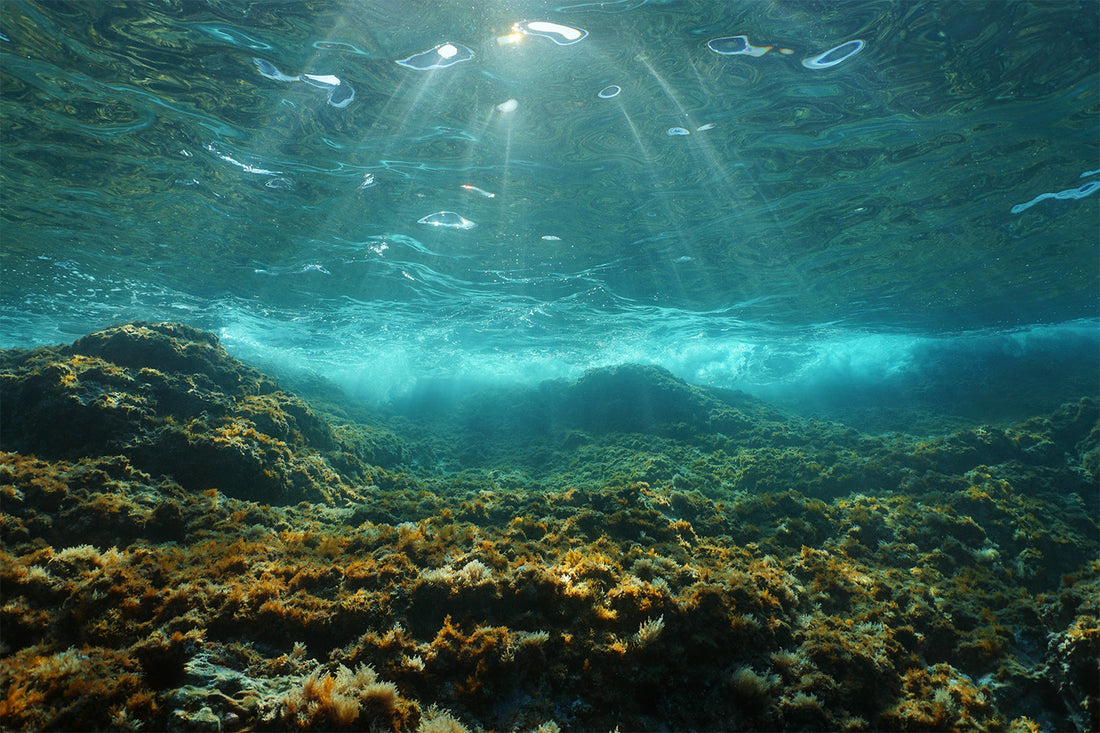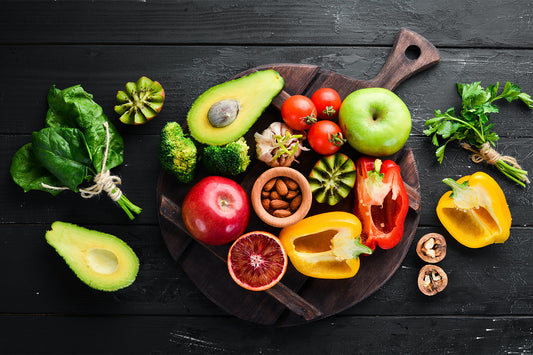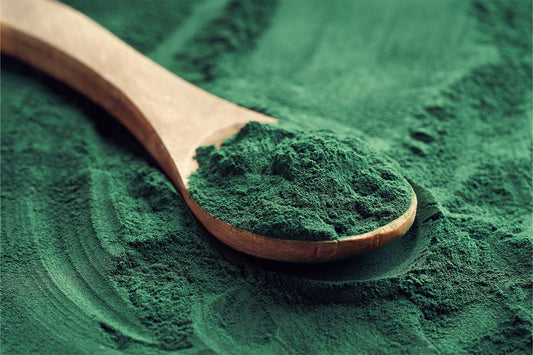In the 21st century, the world is steadily shifting towards more sustainable materials and production processes. It's a necessary change, and one that promises a better, healthier future for our planet. Among a wide variety of options, one organism has been making waves in recent years for its versatility and sustainability — algae.
Algae, a tiny and often overlooked aquatic plant, is rapidly emerging as a front-runner in the race toward sustainability. This little powerhouse is not only abundant and easy to grow, but it's also packed full of nutrients, making it a true game-changer. Let's dive into the world of algae and its potential to support planet Earth.
What Is Algae?
The word algae refers to a diverse group of aquatic organisms. Although commonly referred to as a "plant," algae is unique in that it doesn't possess the typical plant structure we're accustomed to seeing. It lacks the conventional leaves, stems, or roots seen in land-based plants. Yet, it does still share a critical attribute with them — it contains chlorophyll and is capable of photosynthesis, the process of converting sunlight into energy.
This fascinating organism is found naturally in a variety of environments, from freshwater sources like rivers and lakes to saltwater bodies like oceans and ponds. It's even found in damp soil, on rocks, and on the bark of trees. If there's moisture around, there's a good chance you'll find algae there.
There's incredible diversity within the world of algae, with hundreds of thousands, if not millions, of marine algae species floating around in bodies of water across the globe. Some of the most commonly known types include Chlorella, Nannochloropsis, and Spirulina. These forms of algae are particularly noteworthy due to their high nutrient content and potential health benefits.
Despite its petite size, algae is a true powerhouse in every sense of the word. Its potential uses are extremely wide-ranging, and the mass production of algae can be vastly sustainable when done properly.
What Makes Algae So Sustainable?

Algae's sustainability credentials are truly impressive. This aquatic organism is not just easy to produce, but it also requires far fewer resources than most foods and materials. Its ability to thrive in various environments with minimal care makes it a standout in the realm of sustainability.
Producing algae is fairly straightforward. All it needs is water, sunlight, carbon dioxide (CO2), and a few essential nutrients. Unlike traditional crops that require fertile land and extensive care, algae can grow in diverse conditions, even including salty water, making it a highly adaptable organism.
One of the key reasons algae is hailed as a sustainability superstar is its rapid growth rate. Algae can multiply quickly without much effort, making it a readily available resource — but it's not just about how fast it grows. It's also about what it does while it's growing. During photosynthesis, algae helps capture CO2 emissions from the atmosphere, playing a vital role in mitigating climate change.
The sustainability story of algae doesn't end there, though. When you compare algae with other crops, its benefits become even more apparent. Algae is a nutrient powerhouse, packed with protein, antioxidants, vitamin B12, amino acids, and omega-3 fatty acids. In fact, it's more protein-dense than soy and requires less open land area to produce. This makes algae an impressive alternative food source, especially compared to animal-based foods, which often have significant environmental footprints.
Choosing algae over other materials and foods is a step towards a better future. By opting for algae, we can cut down on unsustainable production practices and maximize the value of the resources we use.
What Are Some Sustainable Uses of Algae?
With so many environmental benefits, there are many reasons to embrace algae as a potential solution to unsustainable production. By producing algae, we can significantly reduce carbon footprints and even reap the benefits of excellent innovative products.
1. Shoes
If you never thought you would have the option of wearing algae, you certainly wouldn’t be the only one. Regardless, this outside-the-box idea is one to admire. The clothing industry can be incredibly wasteful, using excessive resources, harmful production processes, and tons of water. Shoes are one of the biggest examples, as one pair of shoes can use over 20 different materials, from rubber to plastic polymers.
With the help of algae, you can now find a shoe that cuts down on unnecessary waste and bioplastics. Sustainable brand Native has created Bloom shoes using algae as a replacement for the foam inside the shoe. These shoes are made in China and Vietnam by harvesting algae from naturally occurring toxic blooms.
Meanwhile, 80 liters of filtered water are put back into the environment. By using this filtered-out algae, Bloom foam technology helps protect ecosystems, all while using an impressive alternative to plastic and saving 15 balloons worth of carbon dioxide. Many other brands are also embracing algae to make t-shirts, hoodies, and other clothing.
2. Shampoo
Unlock the potential of the ocean with the power of algae-infused shampoos. This abundant aquatic plant isn't just easy to produce sustainably, but also boasts a rich nutrient profile. These nutrients are like a superfood for your hair, providing an exceptional level of hydration and nourishment.
When you wash your hair with algae-based shampoo, you're treating your locks to an invigorating blend of vitamins and minerals that promote stronger, shinier, and healthier hair.
The benefits of algae aren't just deep-rooted in its nutrient density. The way it's farmed also contributes to its appeal. The algae for this shampoo cultivated sustainably in desert pond beds, using salty water from underground aquifers. This process makes algae a more sustainable choice than many other common hair care ingredients.
So, when you choose a cruelty-free, plant-based shampoo powered by algae, you're not just making a great choice for your hair, you're also making a positive impact on the environment. It's a win-win situation that leaves your hair looking better and the planet feeling better too. Embrace the power of algae and let your hair reap the rewards.
3. Skincare

The benefits of algae extend beyond the shower and into your skincare routine as well. This nutrient-dense plant has found its rightful place in a multitude of moisturizing products, infusing them with its hydrating properties.
Algae's richness in antioxidants and healthy fats, including omega-3s, makes it a skincare superstar. The antioxidants in algae support the healthy aging of the skin, working to keep your cells functioning properly even during exposure to free radicals and oxidative stress. Meanwhile, omega-3s, like those found in iwi life's products, help maintain a healthy skin barrier, supporting overall skin hydration and integrity.
4. Food for Everyone
Even if you’re not into eating macroalgae like kelp right out of a bag, algae is probably already a part of your everyday diet. For instance, a red algae derivative called agar is a thickening and gelling ingredient similar to gelatin that is used to make ice cream and toothpaste.
Additionally, carrageenan is a similar algae product that is used as a stabilizer in many dairy mixtures and foods. Meanwhile, alginate is a medium found in brown algae used in many pharmaceutical contexts today. Some types of algae are even used for their pigments, which are used to dye many food products, including the blue dye for M&Ms.
Algal biomass is also a common ingredient in some animal feeds due to its high nutritional content and high levels of carbohydrates, potassium, magnesium, and enzymes.
As it turns out, algae makes a great option for your pets as well. Most dog treats are made using animal products, like chicken and beef. For many, this sacrifice is considered to be worth it because of the assumption that only animal foods can provide considerable amounts of protein and nutrients.
Sustainability all starts with choosing one more sustainable option at a time, from our dog treats to our own food.
5. Nutritional Supplement
Take your wellness routine a step further by incorporating algae not just into your hair and skincare, but also your diet. This mighty marine plant, with its wealth of vitamins, minerals, antioxidants, and healthy fats, is emerging as a holistic superfood. Algae, particularly strains like Spirulina and Chlorella, are often available in forms such as powders and daily capsules, making them an easy addition to your nutritional regimen.
These algae-based food supplements are beneficial for everyone, but they're particularly beneficial for those following a plant-based diet. They can be effortlessly stirred into protein shakes, smoothies, or even a glass of water, providing an incredible nutrient boost. Remarkably, algae can even supply vitamin B12, a nutrient often associated exclusively with animal products. This is a game-changer for vegans and vegetarians who may struggle to meet their B12 requirements through diet alone.
The significance of algae as a nutritional supplement extends beyond personal health and into the realm of global sustainability. As the world's population continues to burgeon, concerns are mounting about the long-term sustainability of our current food production practices. Algae, with its protein-dense profile, nutrient richness, and ease of production, offers a viable solution.
6. Sustainable Energy
Because algae have naturally high photosynthesis rates, they have recently been used in the creation of biofuel. While blue-green algae, also known as cyanobacteria, has the highest photosynthesis rates, other types of algae, like diatoms and green algae, are high in lipids that may help create biodiesel fuels.
Many algae species also have high concentrations of fermentable sugars, which are important ingredients in the production of bioethanol. Even more importantly, algae is a renewable energy source, meaning that as long as there’s water and sunlight, it’ll never run out.
Microalgae can also help promote bioremediation and reduce greenhouse gases, which may play a part in preserving the environment. It can also help with wastewater treatment, which makes it invaluable in providing clean water.
As amazing as algae is, it currently isn’t produced on a large scale. Although these photosynthetic organisms are perfectly happy to live in any conditions, including salt water, fresh water, and even fermentation tanks, we still have a long way to go before we can produce algae in large amounts suitable for these uses.
While biotechnology and aquaculture might not replace fossil fuels as energy sources anytime soon, research into the potential for algal biofuel production is on the rise and may provide a sustainable alternative to our currently gasoline-dominant society.
7. Omega-3 Supplement

You're likely familiar with the health-boosting properties of fish or krill oil, largely due to their rich content of omega-3 fatty acids. Omega-3s are lauded for their astounding health benefits including the ability to support healthy blood pressure, maintain joint health, and promote cognitive function, positioning them as a vital part of a balanced diet.
When you think of sources of docosahexaenoic acid (DHA) and eicosapentaenoic acid (EPA) – the most beneficial yet hardest to obtain omega-3 fatty acids – fish oil and krill oil are probably the first ones that come to mind. However, the extraction of these oils often disrupts marine ecosystems, posing a significant environmental concern.
Enter algae, nature's surprising yet highly effective source of DHA and EPA. Algae-based omega-3 supplements, like those provided by iwi life, offer a sustainable and equally effective option. What's more, research suggests that your body may absorb omega-3 fatty acids from algae even more efficiently than from other sources.
The production of algae-based supplements is a testament to sustainability. Algae farming requires minimal resources, making it a practical and eco-friendly solution to meet the growing demand for omega-3s. For instance, at iwi life, our Nannochloropsis strain of algae is sustainably farmed in previously unusable desert land, ensuring a high yield without disrupting precious marine ecosystems.
Ultimately, by choosing algae-based omega-3 supplements, you're not just supporting your personal health; you're also contributing to a healthier planet. It's a choice that delivers the invaluable benefits of omega-3s while preserving our oceans, making it the obvious choice for the health-conscious, eco-aware consumer.
Embrace Algae as the Future
Altogether, there are many surprising uses of this abundant aquatic plant, and embracing them is an excellent way to support the planet while giving yourself some great products to add to your daily routine. At iwi life, we aim to provide reliable nutrition while preserving the environment for generations to come. Explore our omega-3 supplements for yourself and start maximizing your nutrient intake while minimizing your impact on the planet.
Sources:
Algae-Based Carbon Sequestration | IOP Conference Series
Diet and Skin Barrier: The Role of Dietary Interventions on Skin Barrier Function | PMC
More protein and good for the planet | University of Technology Sydney
















